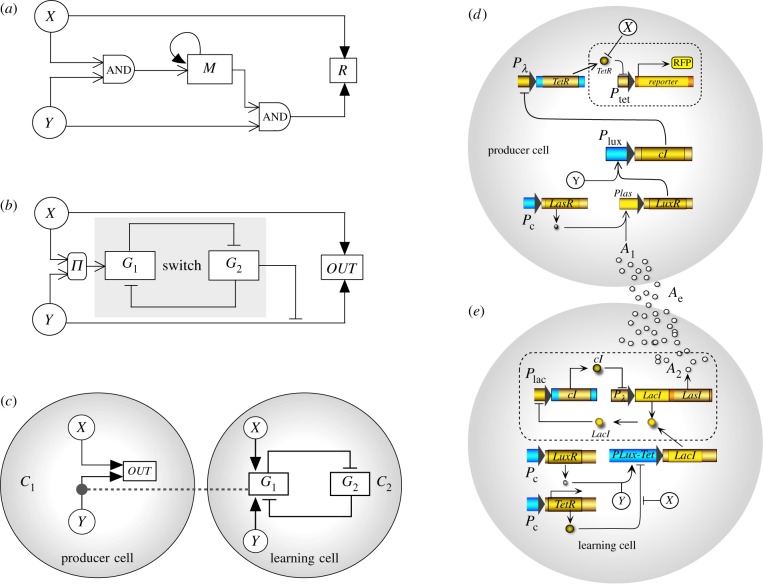Figure 1.
The logic of a two-cell AL circuit. (a) An example of ‘standard’ implementation, following neural network principles, is shown (adapted from [25]). (b) We summarize the basis of the circuit presented here that exploits the presence of a toggle switch (indicated in grey). Two inputs are present, X and Y indicating unconditioned and conditioned signals, respectively. The circuit can be split in two parts corresponding to two engineered cells (c) here indicated as C1 and C2, where the molecule G1 from C2 is needed to sense the signal Y (indicated with the grey dashed line). (c–d) The proposed implementation of the synthetic consortium is shown. Here the two cells (d, producer, e, learning cell) communicate in one direction by means of a molecular signal (A). Each engineered cell type performs part of the processing required to implement the association mechanism. We have used specific genes, cell–cell communication signals and reporters, but the basic principle can be used in different contexts (see text). (Online version in colour.)

